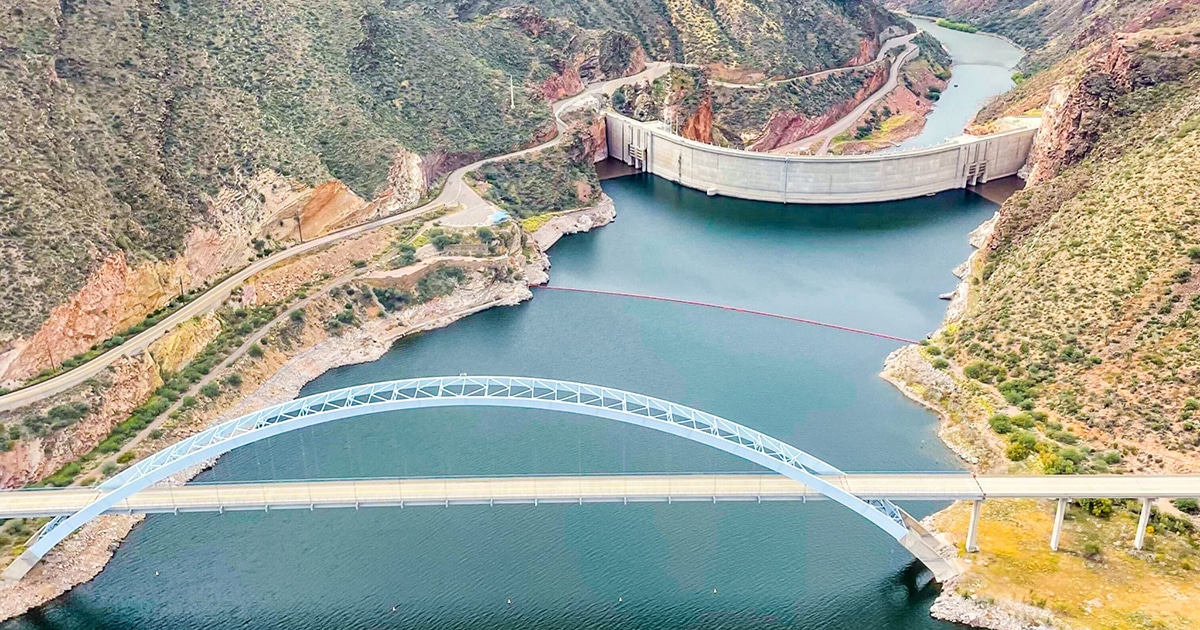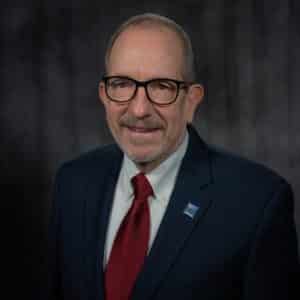

Ambassador Event: Arizona’s Water Position
Published: 11/04/2022
Updated: 04/16/2024
Arizona utilizing variety of sources to address its water supply
Drought has impacted Greater Phoenix and Southwest Basin states for the last 22 years and a shortage of Colorado River water reaching Lake Powell and Lake Mead has led to a dwindling supply and triggered a Tier 2a shortage as declared by the US. Bureau of Reclamation.
Decades of intentional planning have bolstered groundwater supply in Greater Phoenix, set aside for times of need, but further investment is necessary to support future growth. While the recent shortage will not severely impact Arizona residents, improved water infrastructure is necessary to create efficiencies in water management and conservation that preserve Arizona’s water future.
Leaders from the Central Arizona Project, a 336-mile system that transports water from the Colorado River to central and southern Arizona, and Salt River Project, a Greater Phoenix utility provider and one of the state’s largest water suppliers, joined a panel hosted by the Greater Phoenix Economic Council to discuss Arizona’s water position. The panel consisted of:
- Ted Cooke, General Manager, Central Arizona Project (CAP)
- Leslie Meyers, Associate General Manager & Chief Water Executive, Salt River Project (SRP)
- Christine Mackay, Community & Economic Development Director, City of Phoenix (Moderator)
“We have a long history of water supply development and we’ve had a very good run and we’re just coming to the point now where we have to acknowledge and rationalize how we’re going to go from where we are now into the future,” Meyers said.
What’s the Water Situation?
Agriculture makes up the majority of the state’s water use. This industry represents 72% of water use in Arizona, while industrial takes up 6% and municipal the remaining 22%.
Arizona has four sources of water. In 2019, groundwater made up 41% of water use, the Colorado River made up 36%, in-state rivers made up 18% and 5% of water was reclaimed.
Colorado River usage decreased this year with the shortage declaration. Arizona took a 512,000-acre-foot reduction in 2022, about 18% of its usual water allocation. In 2023, that number will increase to a 592,000-acre-foot reduction, an extra 3% drop.
In response, CAP has dramatically decreased the water allotted to CAP Agriculture and Non-Indian Agriculture pools. Future reductions could impact cities, industrial use and Native American tribal land.
SRP has more balance in its water supply because it has flexibility with a variety of dams, rivers and wells and a significantly smaller footprint. To ensure continued balance, it is prioritizing initiatives including modification of reservoirs and rectifying sediment issues, thinning and restoring forests, and integrating its system with that of CAP.
“When the Central Arizona Project was built, there was an interconnection facility provided so that we could deliver Central Arizona Project water into the Salt River Project system, which gave us tons of flexibility,” Meyers said. “At the time, there was a lot of Central Arizona Project water, and Salt River Project was in maybe a little tighter situation. Today where we are, we realize the need to be able to reverse that and to deliver water from the Salt River Project system into Central Arizona Project system.”
There are a variety of causes of lower water levels for both CAP and SRP. Dry soil, higher temperatures and low precipitation has contributed to low runoff conditions from snowy mountains that would typically provide CAP with more water. Forest wildfires have impacted SRP’s watershed, burning 3.2-million-acre feet of the watershed over the last 20 years.
“While we are in balance, there’s still a whole list of issues and things that SRP is always looking at and working on to expand that resiliency and reliability and give ourselves flexibility not just within our own system, but to coordinate with the Central Arizona Project and be able to deliver reliable supplies throughout central Arizona,” Meyers said.
Potential Solutions
Arizona spent the last 20 years in conservation mode, and Cooke said that has created efficiencies for residents and high-water users. But with water levels at Lake Powell and Lake Mead so low and cuts to the Colorado River supply, conservation alone is not enough.
The state can pull more from other sources including groundwater basins, long-term storage facilities and wastewater. Water technology in the agricultural sector has advanced with the implementation of techniques including laser-leveling fields and drip irrigation. Further advancements that consume less energy will provide more efficient options, and investment in these products and sciences can help decrease water use in farming.
Cooke indicated that groundwater recovery and reuse will get us from the current water position to 10 to 20 years from now when desalination and importation from other river basins are more viable, but it’s going to take time and it’s going to be expensive.
“After that, then this will be a renaissance. We’ll have these water supplies developed, the infrastructure has been preserved — but that might not happen until 2040,” Cooke said.
What about California?
As states litigate water cuts throughout the Colorado River Basin, California has not taken any water cuts. The state is not required to do so. California received senior priority to water rights in the 1968 Basin Act, which authorized the construction of CAP and outlined that California could take its full apportionment before CAP received any of its share. This is reflected in 20-year guidelines implemented in 2007 by the Secretary of the Interior.
Cooke said there may be litigation over California’s water use compared to that of its neighboring states in the southwest.
“There certainly are equitable arguments. 1968 was a long time ago, I don’t think that anyone [anticipated a] 20-plus-year drought starting in the year 2000 and that there would be 40 million people living in cities … across the basin,” Cooke said.
Meet the Panel
Ted Cooke
General Manager
Central Arizona Project
Leslie Meyers
Associate General Manager & Chief Water Executive
Salt River Project
Christine Mackay
Community & Economic Development Director
City of Phoenix (Moderator)


